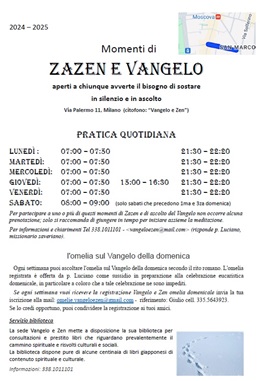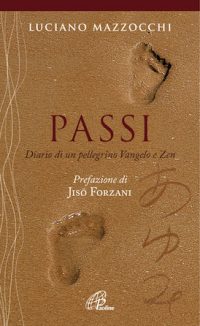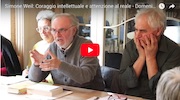Zazen is the main, and one could al so say the ‘only’, religious practice in the Zen Buddhist tradition. This practice is well known today, even in the West, not only by experts or students of Buddhism, but also at more popular levels.[3]
The term Zazen is often translated as “meditation,” but while meditation implies a mental activity of a subject concerning an object, zazen is rather the overcoming of this opposition between subject and object by refraining from “thinking” about something. I would rather translate the Japanese term zazen as “silent sitting.” Here silence refers not only to the absence of words (silence of the mouth), but also to the absence of thought (silence of the mind). It is a deep silence that empties our whole being of our ego, so that a new, deeper awareness may develop: the awareness of (or awakening to) our true “self.” Zazen is said to be silent sitting because the position or posture of the body is very important to it. Body and mind cannot be thought of as two separate things: the body and the soul are two elements of one and only “substance” or reality. So the position of the body is very important, even though not essential, to the practice of zazen.
The classical position is to sit straight, on a round cushion, with crossed legs (the “full lotus” position) or only one foot (usually the left foot) over the opposite thigh (the “half-lotus” position). If this position is difficult, one can adopt the “Burmese posture” in which the left foot just rests alongside the right thigh, not over it. This posture is intended to equally distribute the weight of the body on three points: the knees and the lower back. The body becomes a “stable and unmovable pyramid,” perfectly silent, and yet intensely alive. When one gets used to it, this turns out to be a very comfortable and natural way of sitting! But this is only the beginning on the way to a deep spiritual silence, the emptying of the “ego” (mu) and the awakening to one’s true “self” (satori).
| Zazen and Adoration of the Eucharist « | » Adoration of the Eucharist |





